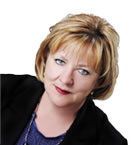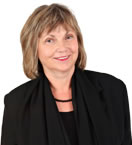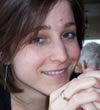Our Victorian great-grandparents avoided the sun because they didn’t want to look like fieldworkers, even if they were. They wore hats, long-sleeved shirts, gloves and carried parasols.
In the Roaring Twenties, Coco Channel made a fashion statement after she returned from a holiday in southern France looking bronzed and beautiful.
A glowing tan came to represent health and wealth. The upper classes could take holidays in warm places and enjoy their leisure time playing golf and tennis, or at the beach.
For the next five decades having a tan was a status symbol for people with fair skin (and it still is). It wasn’t until the 1980s that people started to read about the effects the sun’s ultraviolet (UV) rays have on their health. It would take a few more years before they started to believe those warnings.
UV radiation damages the skin’s epidermal cells. Repeated, unprotected exposure to the sun can cause wrinkles, sagging skin, age spots, and cataracts.
Health Canada warns sunburn, either from the sun’s rays or from tanning beds and lamps, has been linked to the risk of non-melanoma skin cancers and malignant melanoma.
Most skin cancers start in areas that are exposed most often to sun: the head, neck, hands and arms.
Despite the dangers of sun-worshipping, many people still soak up the sun because they think they look healthier and more attractive with “a bit of colour.”
Staying out of the sun isn’t easy for active people who believe they look better and healthier with bronze skin.
“White is the new look,” says Sudbury dermatologist Dr. Lyne Giroux, a promoter of safe summer fun without excessive sun exposure.
Supporting the Australian slogan “Slip, Slop, Slap,” Giroux recommends people “slip” on a shirt, “slop” on sunscreen and “slap” on a wide-brimmed hat before going out into the sunshine.
“You want something with a great UVA spectrum,” she says, suggesting a minimum SPF of 30 and emphasizing the importance of reapplying after swimming, excessive sweating or participation in sports.
Starting with sun protection as a child is a preventative measure against skin disease later on. In fact, one too many sunburns in the early years of life is said to be one of the contributing factors that leads to skin cancer.
Giroux, who opened her medical surgical dermatology practice in January 2005, sees hundreds of cases of skin cancer on a monthly basis, the most common being basal cells. On average, she treats between 100 and 200 people monthly with basal cell cancer.
“It is the most common of all cancers,” she says. “It is not one you’ll die from, but it can invade and destroy structures like the nose or eyes, so it must be removed.”
Squamous cell cancer is the second most common form of skin cancer. Giroux sees approximately 50 to 100 cases monthly. This more aggressive cancer if found on the head or neck has a 25 percent chance of spreading to the lymph glands.
She only sees from two to four cases of malignant melanoma, the most deadly, on a monthly basis.
Ninety percent of Giroux’s patients are covered by OHIP. Clients are referred by their doctors. The remaining 10 percent are treated in her Skin Clinic where cosmetic treatments that are not covered by OHIP are available.
Giroux began the Skin Clinic as a complementary business for cosmetic requests and to help offset the extensive capital and operating costs of her phototherapy clinic.
No referral is necessary for the Skin Clinic; however, there is a consultation fee that is absorbed if treatment is pursued.
The Skin Clinic offers a variety of services such as laser hair removal, laser hair stimulator, a carbon dioxide fractional laser wrinkle remover and fillers such as Botox.
The carbon dioxide fractional laser is one of the newer technologies at the Skin Clinic. It is a process of resurfacing the skin by creating minute columns of holes between skin cells so new skin can be produced. This new growth tightens the skin and reduces wrinkles.
The recovery time is as little as one day to one week, depending on how aggressive the application. The procedure for the full face is $1,000 and $500 for the neck and backs of hands.
Another newer device is the hair-stimulating laser. It is a light box that stimulates the hair follicles to allow for regrowth.
“Hair follicles are there, but they miniaturize as you age,” which results in hair thinning or hair loss, Giroux says.
“There are pills and lotions you can use topically to delay progression, but there are not a lot of things out there that can allow regrowth. This is one of the technologies that have shown some improvement.”
The process requires a year’s commitment with frequent visits initially. By month seven, only one visit is required every two weeks. Once completed, a home unit is available for maintenance.
This article appeared in the 2011 Summer issue.









